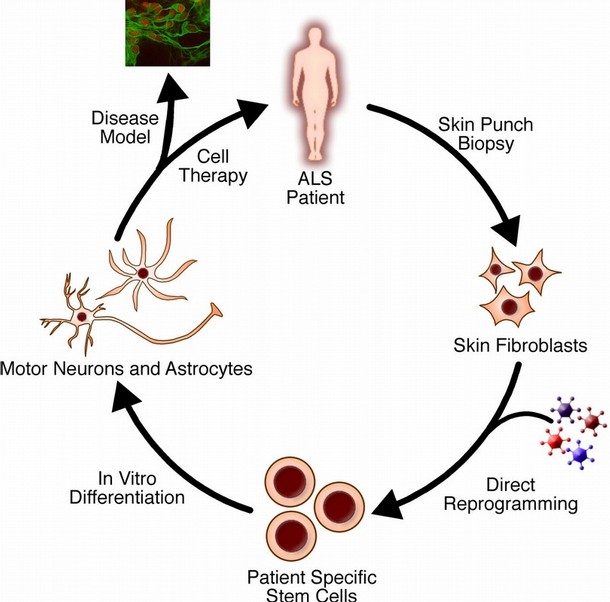Lou Gehrig's Disease

Definition of Lou Gehrig's Disease
Lou Gehrig's Disease, also called amyotrophic lateral sclerosis (ALS), a progressive and usually fatal disorder that attacks the nerves and muscles.
It is sometimes called Lou Gehrig's disease, after the famed New York Yankee slugger whose death in 1941 was caused by this disorder.
Description of Lou Gehrig's Disease
Amyotrophic comes from the Greek language. "A" means no or negative. "Myo" refers to muscle, and "trophic" means nourishment: "No muscle nourishment."
When a muscle has no nourishment, it atrophies, or wastes away. "Lateral" identifies the areas in a person's spinal cord where portions of the nerve cells that nourish the muscles are located. As this area degenerates, it leads to scarring or "sclerosis" in the region.
ALS is a motor neuron disease. It affects the nerve cells that control the muscles we move voluntarily. In this disease, nerve cells in the brain and spinal cord, known as motor neurons, gradually degenerate, causing the muscles under their control to weaken and waste away.
ALS victims eventually become disabled, have difficulty speaking and swallowing, and may succumb to infections, particularly pneumonia.
While the disease paralyzes the "voluntary" muscles, patients remain alert and are able to think clearly, so that they can find ways to communicate without speech. The five senses are unaffected, and most patients maintain control over their bowels and bladder. For some patients, using these remaining abilities can be the springboard to cope with the disease.
The most common form of ALS is known as "sporadic" ALS. It may affect anyone at anytime.
Other terms used to categorize variants of the classical form of ALS include spinal muscular atrophy, progressive bulbar palsy and primary lateral sclerosis.
Causes and Risk Factors of Lou Gehrig's Disease
"Familial", ALS suggests the disease is inherited, although no heredity pattern exists in the majority of ALS cases. About 5 to 10 percent of all ALS patients appear to have a genetic or inherited component. In those families, 50 percent of the all offspring are expected to have the disease.
Most who develop ALS are between the ages of 40 and 70. There have been many cases of the disease attacking teenagers, though generally, ALS occurs in greater percentages as men and women grow older.
It was once believed that men developed ALS more frequently than women. That no longer appears to be the case, and today both sexes are affected in nearly equal numbers.
Symptoms of Lou Gehrig's Disease
Early symptoms vary with each individual, but they usually include tripping, dropping things, abnormal fatigue of the arms and/or legs, slurred speech, muscle cramps and twitches, and involuntary periods of laughing or crying.
With the hands and feet affected first, it causes difficulty in walking or using the hands for the activities of daily living, such as dressing, washing and buttoning clothes.
Since ALS affects only motor neurons, the senses of sight, touch, hearing, taste and smell, muscles of the eyes and bladder are generally not affected.
As the weakening and paralysis continues to spread to the muscles of the trunk of the body, it eventually affects swallowing, chewing and breathing. When the breathing muscles are affected, the patient may require permanent ventilatory support to survive. The mind is not impaired and remains sharp, despite the progressive degenerating condition of the body.
Diagnosis of Lou Gehrig's Disease
Electromyography (electrical studies of muscle) is often performed to confirm the disease. A biopsy (removal of a small piece of tissue) of muscle tissue may also been performed if the diagnosis is in doubt.
Treatment of Lou Gehrig's Disease
Although there is no cure for ALS, much can be done to help patients live more productively and independently. Physical therapy and rehabilitation techniques can help patients learn how to work around the weakness and functional disability caused by the disease. Patients may benefit from braces or a walker to improve mobility.
Questions To Ask Your Doctor About Lou Gehrig's Disease
What tests need to be done to diagnose the condition or the extent of involvement?
How fast will this progress?
What should be expected?
How long until the body begins to show signs of this condition?
Will you be prescribing any medication to relieve symptoms?
What are the side effects?
Will rehabilitative measures be started?
Is there a support group in the area?
